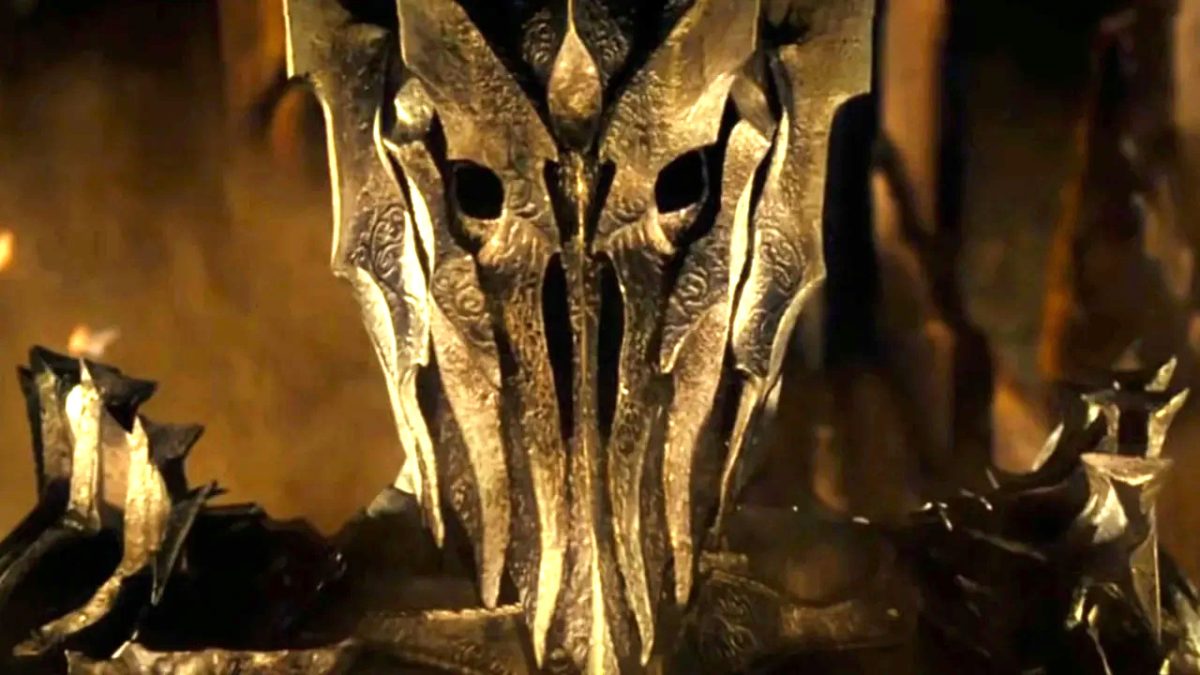
Unlike the original Halloween, which laid out its narrative thrust pretty early – that is, Michael Myers is evil, he’s escaped, and he’s headed home for a killing spree – Season of the Witch keeps its cards relatively close to its chest for much of its runtime, slowly letting its mystery unfold the deeper its characters get caught up in it. And as if to immediately hammer home the point that it’s making a clean break from its predecessors in every way possible, the film ditches Carpenter’s iconic theme in its opening moments, with Carpenter and Alan Howarth delivering a new, mood-setting synth score against a sinister digital pumpkin teasing what’s to come.
That’s not to say Season of the Witch doesn’t have a bit of fun acknowledging its predecessors, though. Nancy Loomis and Dick Warlock – Annie in Halloween and Michael in Halloween II, respectively – make brief appearances here as Dan’s ex-wife and the assassin that kills Harry, and Jamie Lee Curtis lends her voice to the film as the unsettling curfew announcer of Santa Mira. The tagline, meanwhile, “The Night No One Comes Home,” is a fun play on Halloween‘s classic tagline, “The Night He Came Home.” Dan even briefly sees an ad for Halloween play on a bar television, only for the film itself to air in the lead-up to Silver Shamrock’s giveaway in the final act. They’re all great connections and Easter eggs, but the pic never gets lost in them, remaining very much its own thing when all is said and done.
Season of the Witch thrives in maintaining a perpetual sense of unease. Whereas the first two films had the benefit of having Michael lurking Haddonfield, a tangible threat around which everything else swirled, this entry takes strides to keep its audience guessing at how all the pieces fit together until the end. Androids turn up time and again throughout the movie to kill people. A news report covers the mystery about the unexplained disappearance of one of Stonehenge’s standing stones. Aside from the Santa Mira curfew, there are security cameras everywhere monitoring its population, all of whom seem to be brainwashed into thinking Cochran is something of a savior. And then there’s the constant Silver Shamrock jingle played throughout the film, ominously counting down the days to Halloween like a ticking clock of upbeat doom.
It’s as uncomfortable and disorienting for us as it is for Dan and Ellie; we all know something’s terribly wrong, but there’s an overwhelming sensation of increasing helplessness as time passes and Halloween draws near because what that is exactly is unclear, a sinister dread that Season of the Witch captures very well. It’s only when Cochran and his people use an unsuspecting family as test subjects that the end goal is made clear, with Dan – and us – forced to watch a sick demonstration that sees the head of a young boy named Buddy Jr. turn to mush underneath a Silver Shamrock mask while watching what’s to be broadcast across the country on Halloween night, snakes and bugs spilling forth from his skull once his body hits the floor in the film’s most haunting image.
It’s here where the gloves are finally off, Season of the Witch exposing a different kind of evil than the type that dons a mask, picks up a knife, and gets to work. Cochran never has to lift a finger to kill anyone, and yet he’s just as evil – if not more so – than Michael Myers was, willing and eager to sacrifice countless lives all in the name of Samhain and ancient witchcraft, something he justifies as a way of controlling the environment. In particular, he takes glee that it’s the ultimate practical joke against children, and moments such as when he tells Buddy Jr. during a tour of the Silver Shamrock factory that a mask is “just what I had in mind for you” become horrible reminders that he’s relishing every moment of his big plan.






